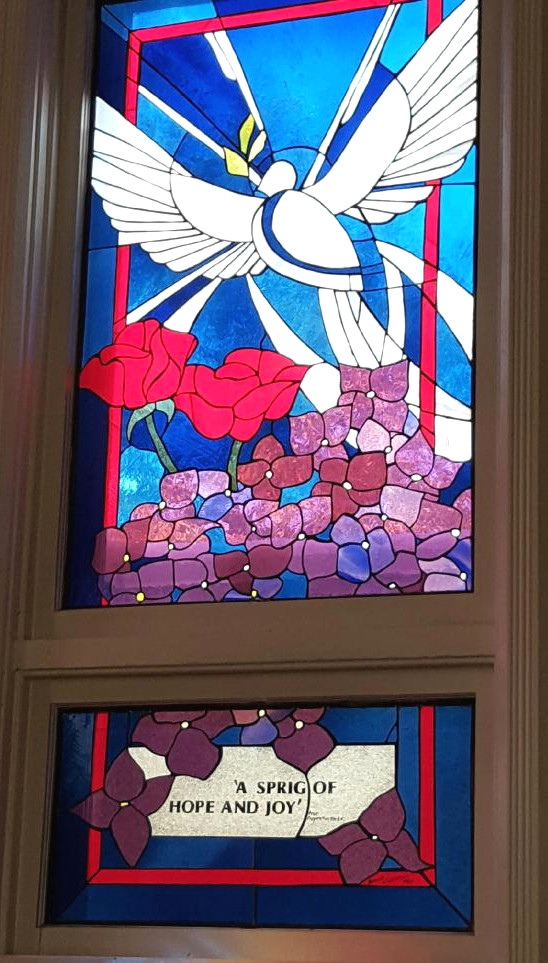Category: Building Profile

On February 27, 2019, Sakaw Terrace (5815 Millwoods Road South, Edmonton) held its Grand Opening. Over 160 residents, tenants, guests, and staff joined us to celebrate this very momentous occasion.
“The official opening of Sakaw Terrace is a very proud time for GEF Seniors Housing as it allows seniors living in the Mill Woods community an affordable, secure, and friendly place to call home,” explained Raymond Swonek, CEO of GEF Seniors Housing.
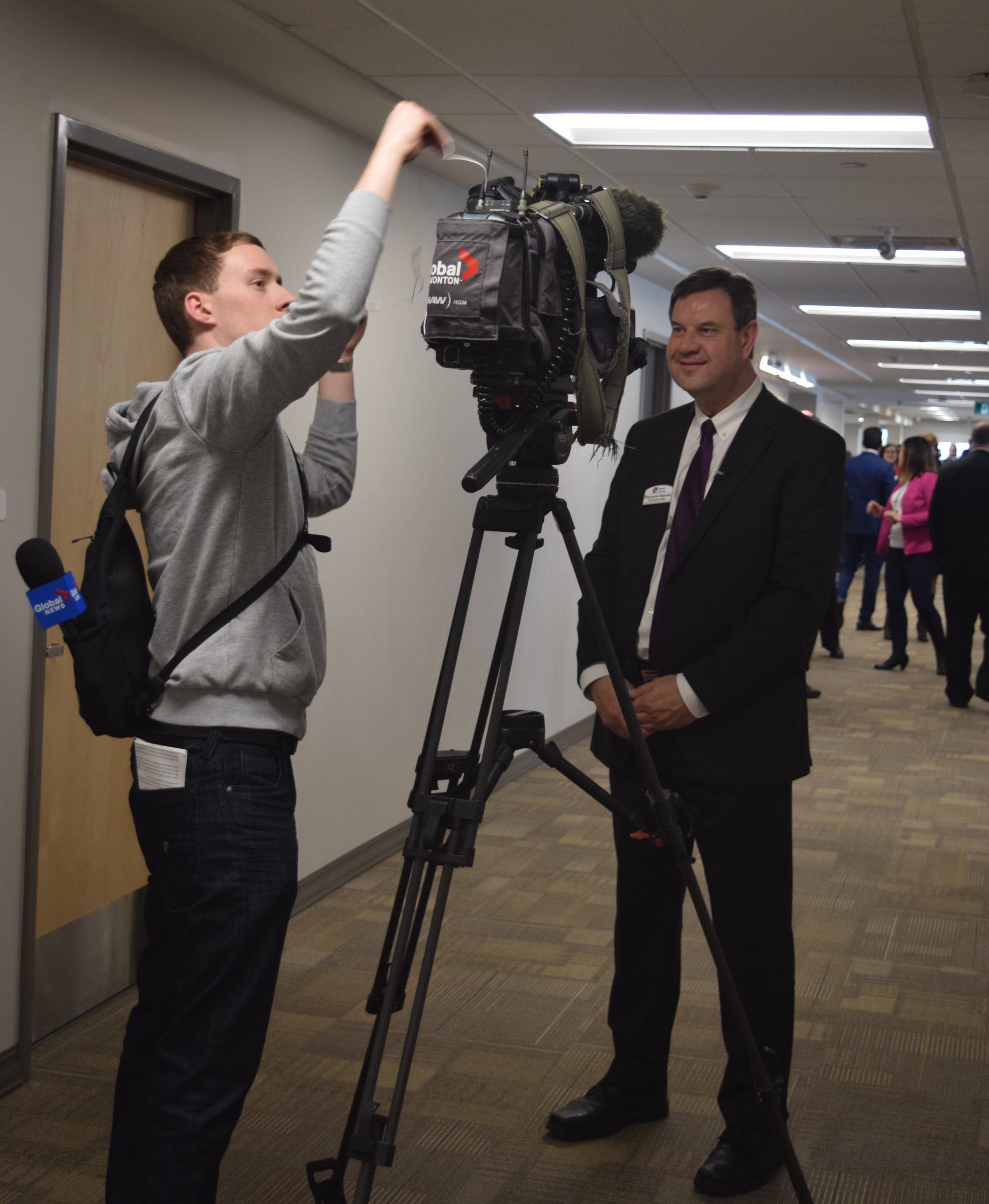
MLA for Edmonton-McClung Lorne Dach MC’d the event and we heard wonderful speeches from the Honourable Amarjeet Sohi, Minister of Natural Resources; the Honourable Christina Gray, Minister of Labour; GEF Board Chair Karen Lynch and ASCHA’s Executive Director Irene Martin- Lindsay!
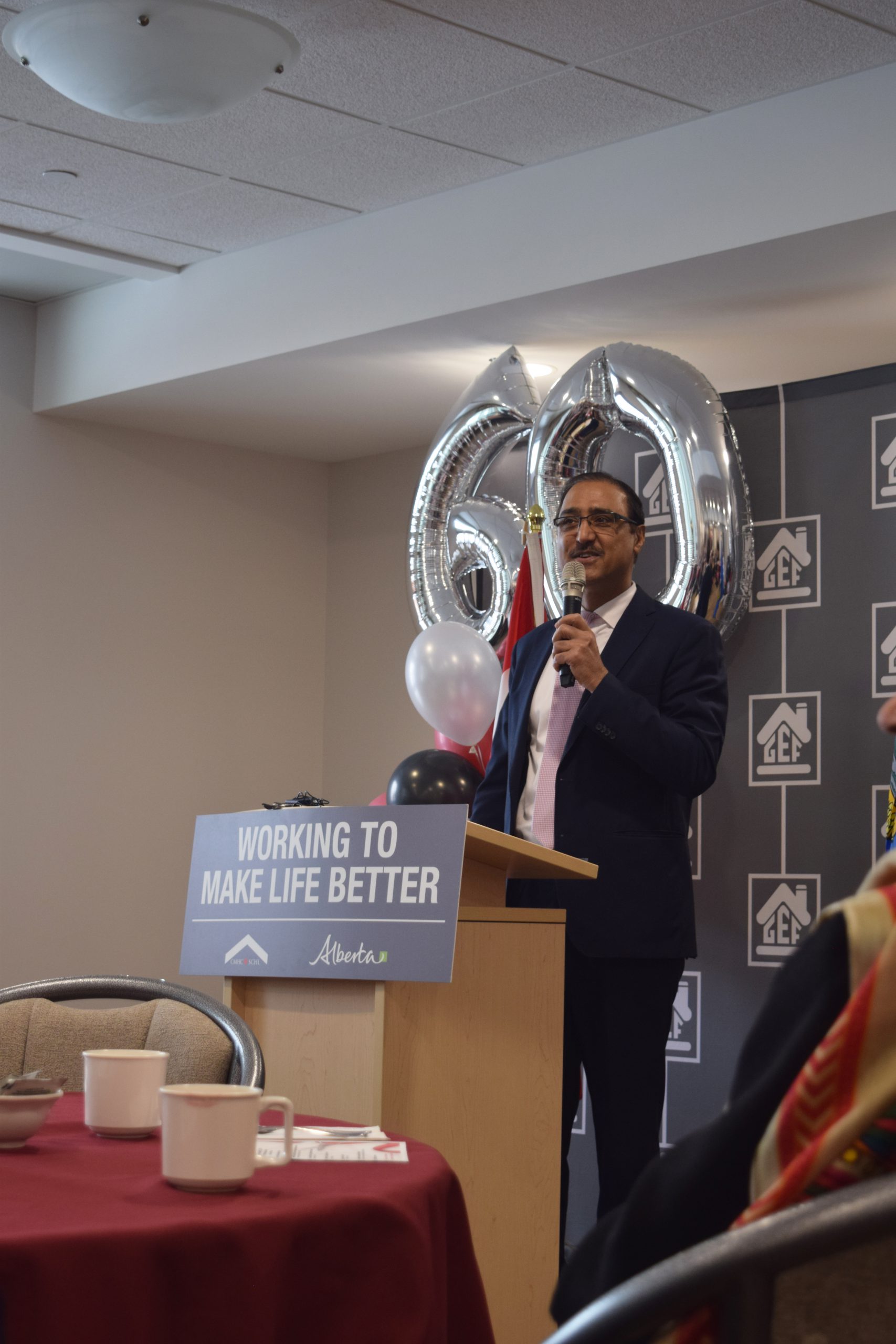
The day was full of big smiles and happy hearts. Residents and tenants who have already moved in were so excited to show off their new home. After the speeches were done, a ribbon cutting to announce the official opening commenced. Cake and refreshments were followed by tours of the building. Guests who went on the tours were impressed by the 70 lodge rooms and 88 apartments, two outdoor courtyards, a communal greenhouse, a theatre room, a salon, a bistro, underground and above-ground parking, and much more!
Seven years from concept to occupation, on November 1, 2018, GEF opened the doors to welcome the first Sakaw Terrace residents. This carefully planned project adopted an Integrated Project Delivery (IPD) collaborative partnership approach to construction. “What this means is that everyone has some skin in the game. The IPD contract has ten parties signed on plus GEF Seniors Housing. All ten of the IPD parties have put their profits on the line for the duration of the construction, which keeps everyone invested in finding those efficiencies and keeping everything on schedule” explains Doug Kitlar, Director of Facility Management. By using this method, the project was able to be completed ahead of schedule and under budget!
The building is currently 90% full and hoping to be at 100% in the next few months. Residents and tenants are feeling at home living at Sakaw Terrace. “I just love the new building. The meals are wonderful and the sugar cookies are just delightful” said a lodge resident. An apartment tenant mentioned “It is my first time in community living and I am more than over the moon. The building, the staff, there is nothing not to like.” One other apartment resident said “I like my apartment. Everything is lovely. It’s beautiful. I like my privacy, but I never feel alone here.”
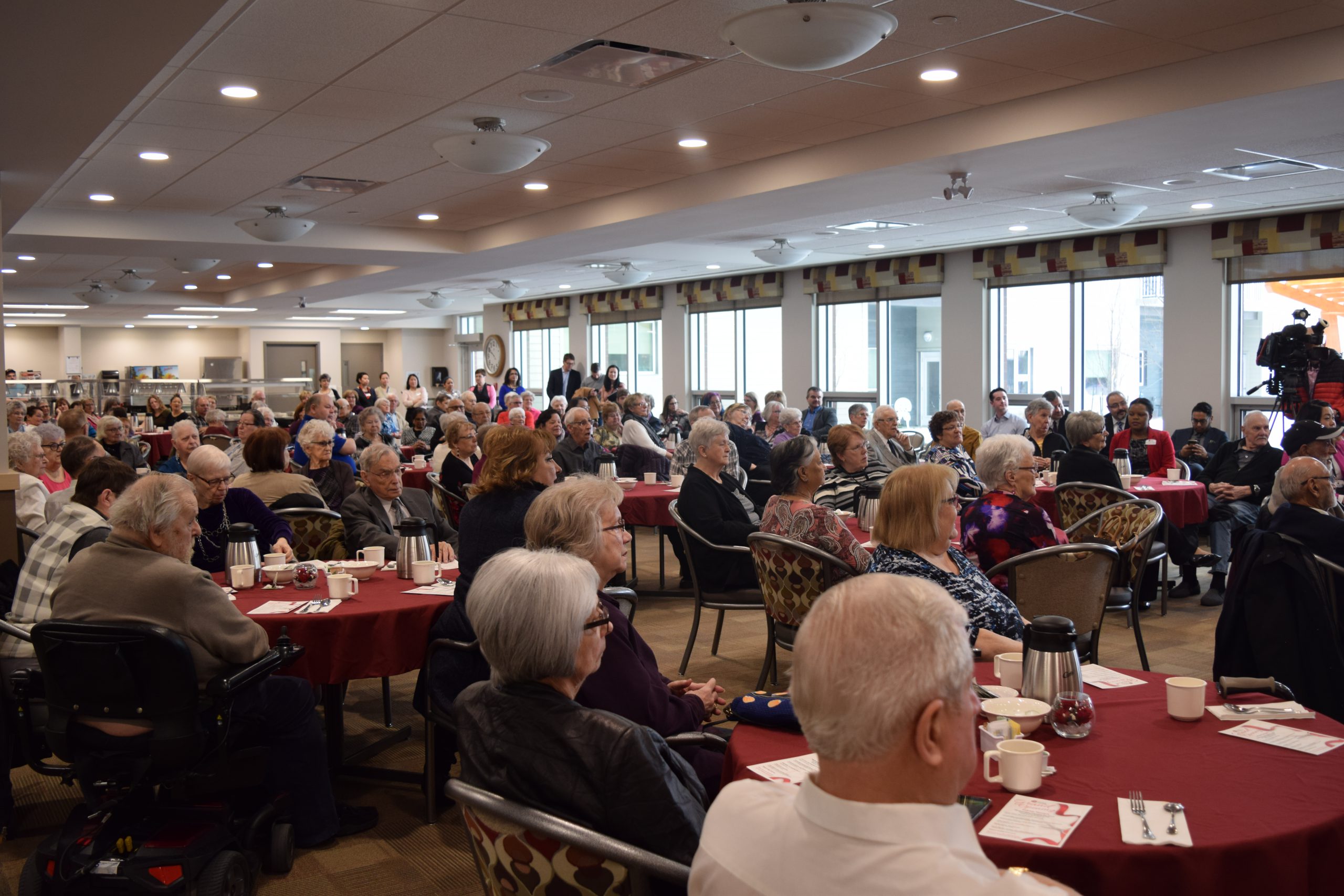
It’s been just over two years since Ottewell Terrace opened its door in the east-end Edmonton neighbourhood. The building added a whole new set of options for seniors living in the area, adding GEF Seniors Housing’s affordable apartments program that sees rent set at 10 to 15 per cent below market value in the area, and set a new standard for how GEF Seniors Housing approached new capital building projects.
“We were already established in the neighbourhood with Ottewell Place lodge and St. Nicholas apartments,” says GEF Seniors Housing CEO Raymond Swonek. “So we knew we wouldn’t encounter any apprehension with affordable housing being built in the area. Rather, what we encountered was a lot of excitement and anticipation for this new building and that drove some really interesting conversations with the community.”
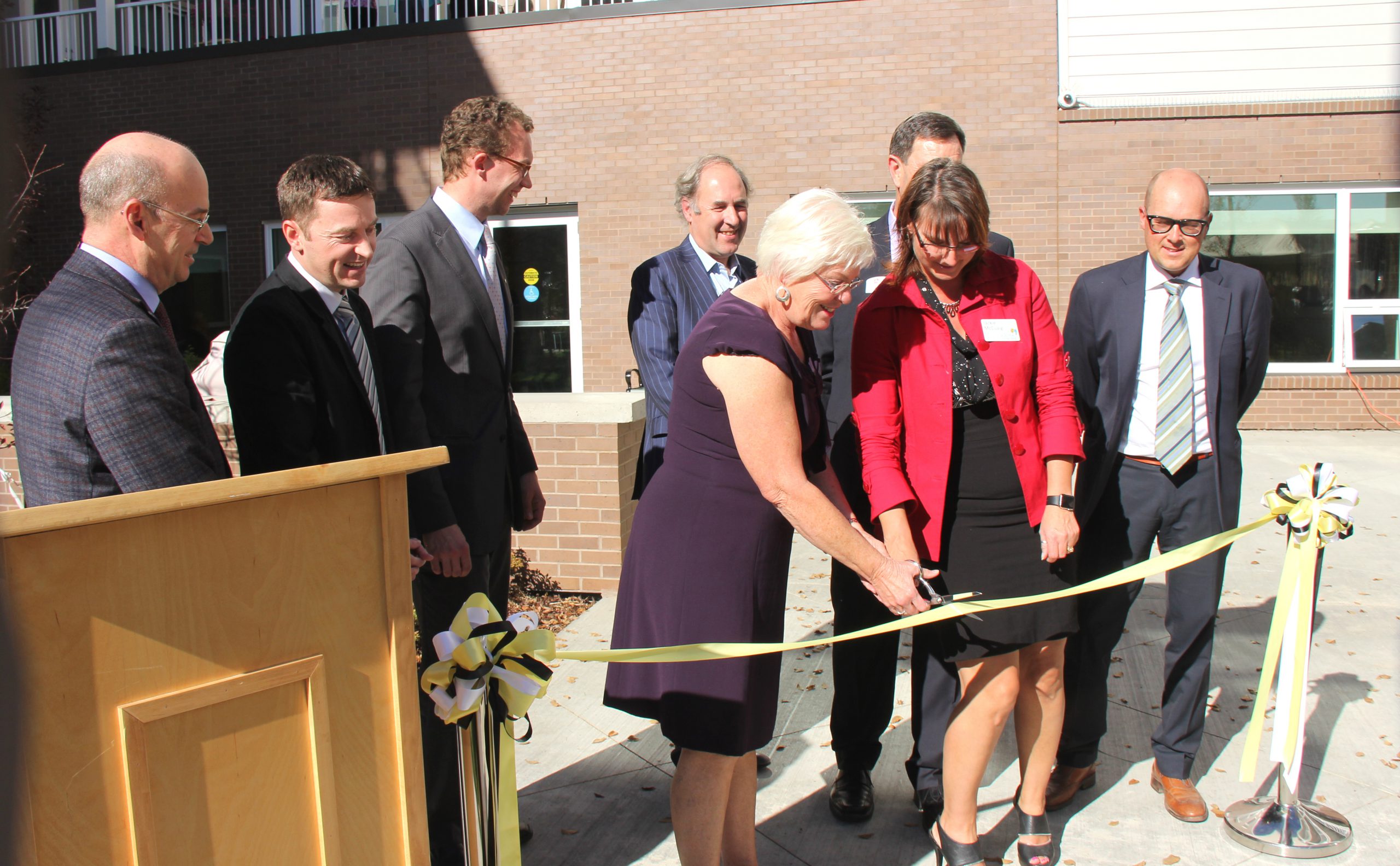
GEF Seniors Housing held community consultation meetings before any ground was broken on the project. This helped to ensure the neighbourhood was on board with the project and that they were kept in the loop throughout the entire process. It was during the community consultation meetings that the idea of integrating a daycare centre into the building came to light.
“I was already aware of all the research that had gone into the benefits of intergenerational programming both for seniors and for children,” Swonek says. “The idea of having easy access to this kind of programming was very appealing for both us and for Primrose Place Family Centre. Since moving in, it’s been a highly successful partnership and brought a lot of value not just to the seniors and the children but to the community as a whole.”
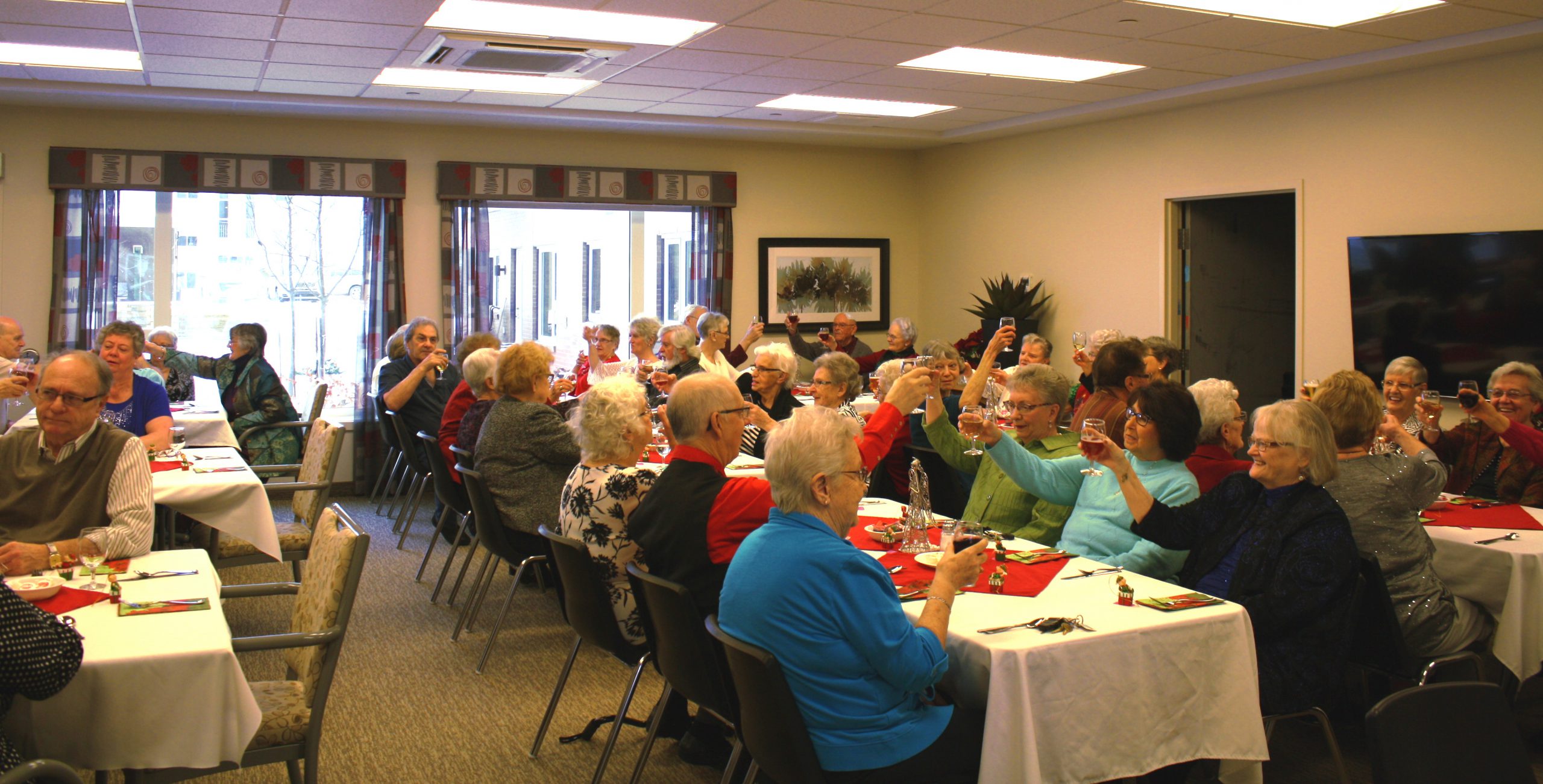
It didn’t take long for the 54 suites in Ottewell Terrace to fill up with seniors excited to call the building their new home. For many of the people who moved into Ottewell Terrace, staying in their community was a big deciding factor for where they were going to live. As neighbourhoods in Edmonton age, so do the people who live in them and Swonek explains that when staying in their own homes is no longer safe or suitable for a good quality of life, affordable housing options need to be readily available in the community.
“A big philosophy we live by is ageing in community,” says Swonek. “We’re seeing this kind of demand for affordable senior housing in a lot of neighbourhoods across Edmonton, especially in older communities like Ottewell. People want to stay in their neighbourhoods, stay close to their friends and family, and keep seeing the same doctors and dentists who know them so well. This easily explains why Ottewell Terrace has become one of our most popular buildings for new applicants.”
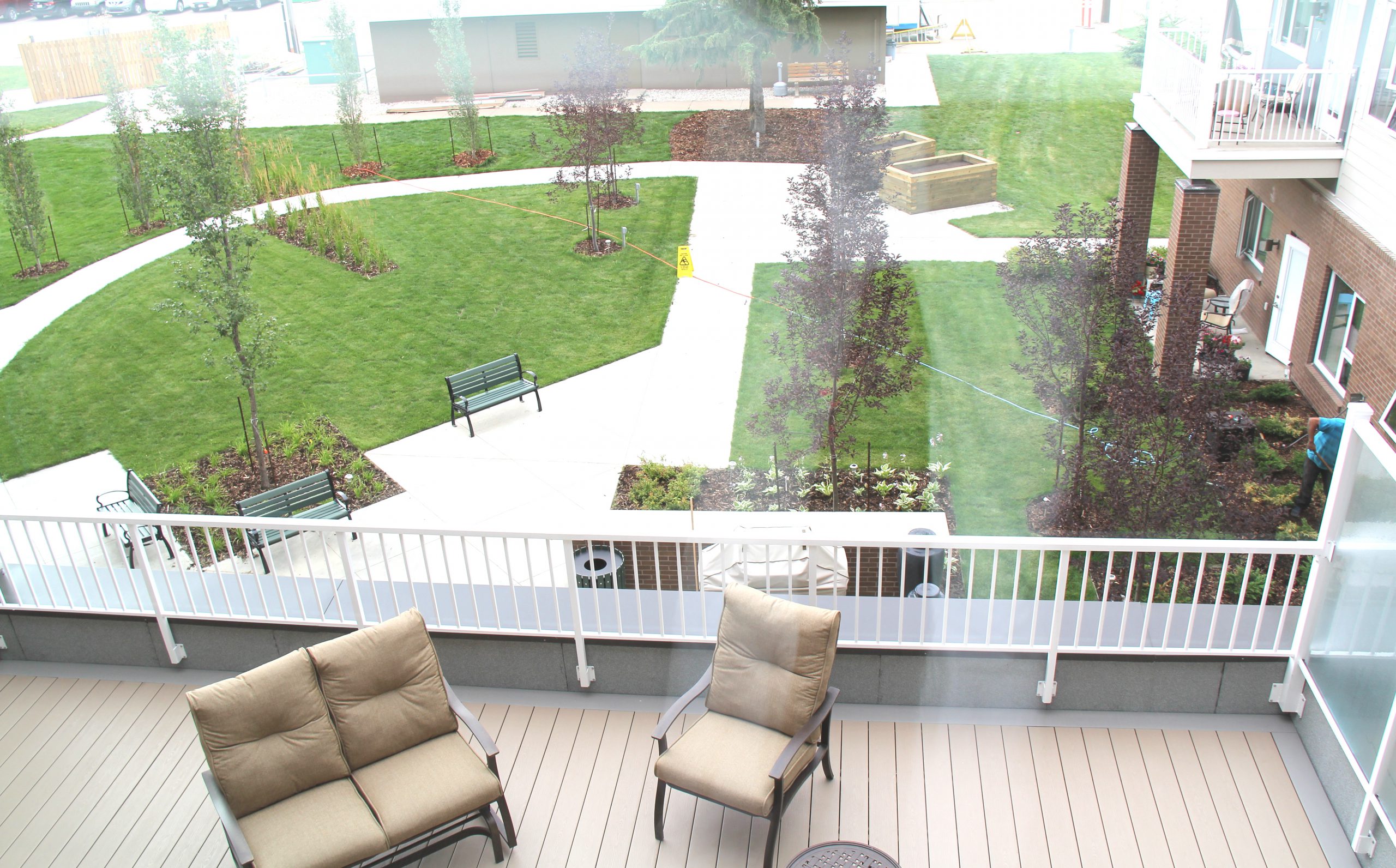
With the success of Ottewell Terrace, Swonek is looking forward to implementing everything GEF learned from the whole process to new capital projects such as Sakaw Terrace and the new development in Elmwood. One of the biggest reminders he had from the Ottewell Terrace project is how much value affordable housing adds to a community.
“You offer people an affordable place to call home and it immediately changes their lives,” says Swonek. “I think every neighbourhood in Edmonton could benefit from having some affordable housing options. Research time and time again shows that mixed communities are healthier and happier places to live. Ottewell Terrace is just one example of how an affordable housing project can add so much value to a community.”
A new bench was placed outside of Cathedral Close on June 29, 2017, and while this isn’t normally something to pay special attention to, this bench represents something more than simply somewhere to stop for a quick rest. As part of the City of Edmonton’s Hello, How Are You? campaign to address urban isolation and mental health, the Buddy Benches were developed by the City Lab as an open invitation to make a connection.
Edmonton Transportation Service (ETS) donated 20 brand new benches to be used as Buddy Benches all over Edmonton as a means to try and address social isolation. The idea is that people can stop and sit on the bench as a signal that they’re looking for someone to talk to. Anyone else can then join the person on the bench, ask how they are, and start a conversation. Most Buddy Benches are painted bright colours with the hashtag #SayHelloYeg to signal that this bench is meant for connections.

“When the bench was being installed, a lot of the tenants were asking what it was about, and after I explained the Buddy Bench program they loved the idea,” says Colleen Simpson, Assistant Manager with Cathedral Close. “We have a couple of our benches and a gazebo on our property, but the Buddy Bench is allowing more connection with the community, which is important for a lot of people.”
Areas being targeted for Buddy Benches include high-density neighbourhoods with lots of pedestrian traffic and close to seniors’ residential buildings. Seniors are increasingly a population at risk for social isolation and more organizations are taking steps to try and address the isolation issues and help prevent any of the adverse health effects that follow social isolation.
“In the short time the Buddy Bench has been in front of Cathedral Close, I’ve already seen a few seniors sit on it, and these are seniors I don’t recognize,” says Simpson. “People from the community are already trying to make more connections and I’m excited to see some of the interactions happen.”

Jim Murland came back to Edmonton in 1948 after serving in the Second World War and he found his first home in the McKernan neighbourhood in the city’s southeast. After he settled in his new home, one of the first jobs he had was adding stucco to the outer brick wall of Knox Metropolitan United Church in the Garneau neighbourhood. Now at 98 years of age, Murland lives at Knox-Met Manor, an apartment building currently being managed by GEF Seniors Housing that was originally built in 1984 in part with help from Knox Metropolitan Church.
The church closed its doors in 2016 with plans to tear down the original building for a new condo development. For Murland, some of his memories of the church that first opened its doors in 1928 stem from one of the most distinctive design features of the building. “I remember attending sermons at the church and always looking up at the stained glass window,” says Murland.
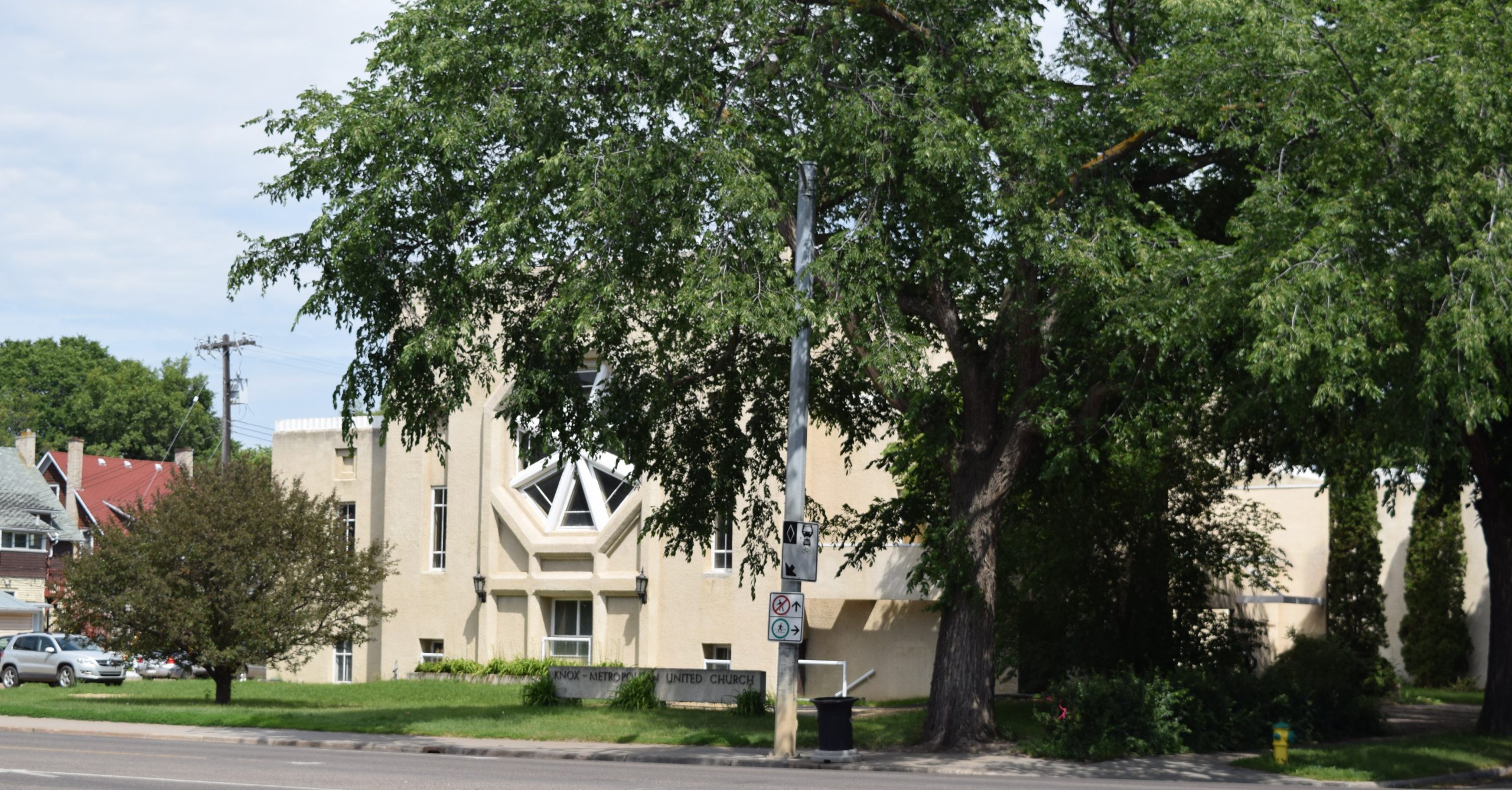
Knox-Met Manor was one of the recipients of a section of the stained glass window because of its close ties to the church. Of the more than 80 tenants living in Knox-Met Manor, many share Murland’s enthusiasm about receiving the window.
Joyce Dahl has been living at Knox-Met Manor since 2000 and was the building’s tenant representative to the church group. She explains that preserving the role that the church played in the development of the property and the connection between the church and the Manor is one to be celebrated. The church played a significant role not just in the history of the Garneau neighbourhood but in Edmonton as a whole.
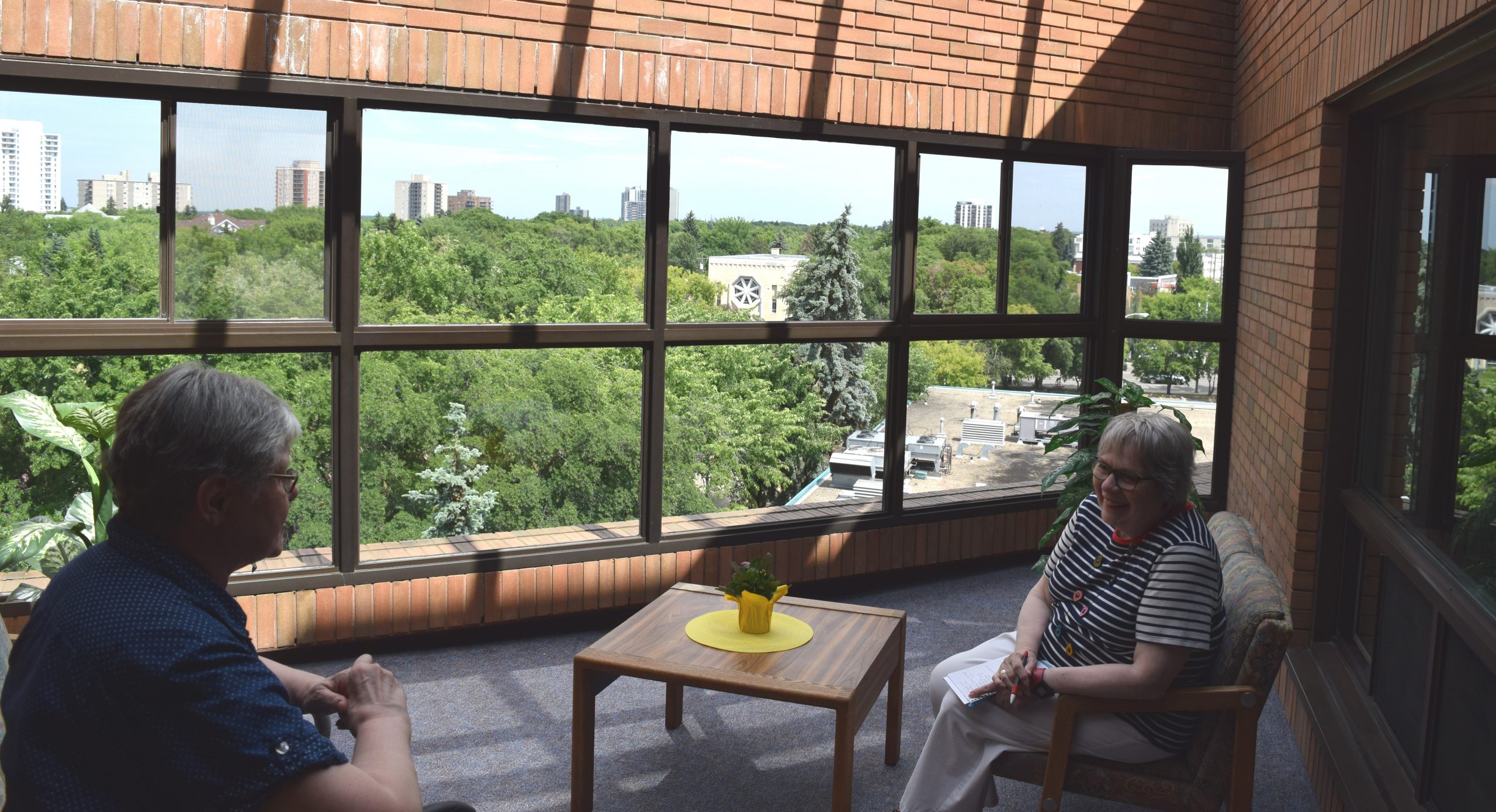
One piece of history is the role Knox Metropolitan United Church played in the Edmonton chapter of Amnesty International. Before she moved into Knox-Met Manor, Florence Miller was a member of Amnesty International and would take the bus from her north-side Edmonton home to the Garneau neighbourhood for meetings. She recollects the different events the Edmonton chapter of Amnesty International played in welcoming new communities to the city from all around the world and the work done to help ensure that these new groups knew they were welcome.
“Even now, there’s still a lot of diversity in [Knox-Met Manor],” Miller says. “We have neighbours from Egypt, Pakistan, South Korea, Papua New Guinea, all over. I want to make sure this piece the church’s stained glass window has a place in our building to commemorate the history of Edmonton being a welcoming city.”
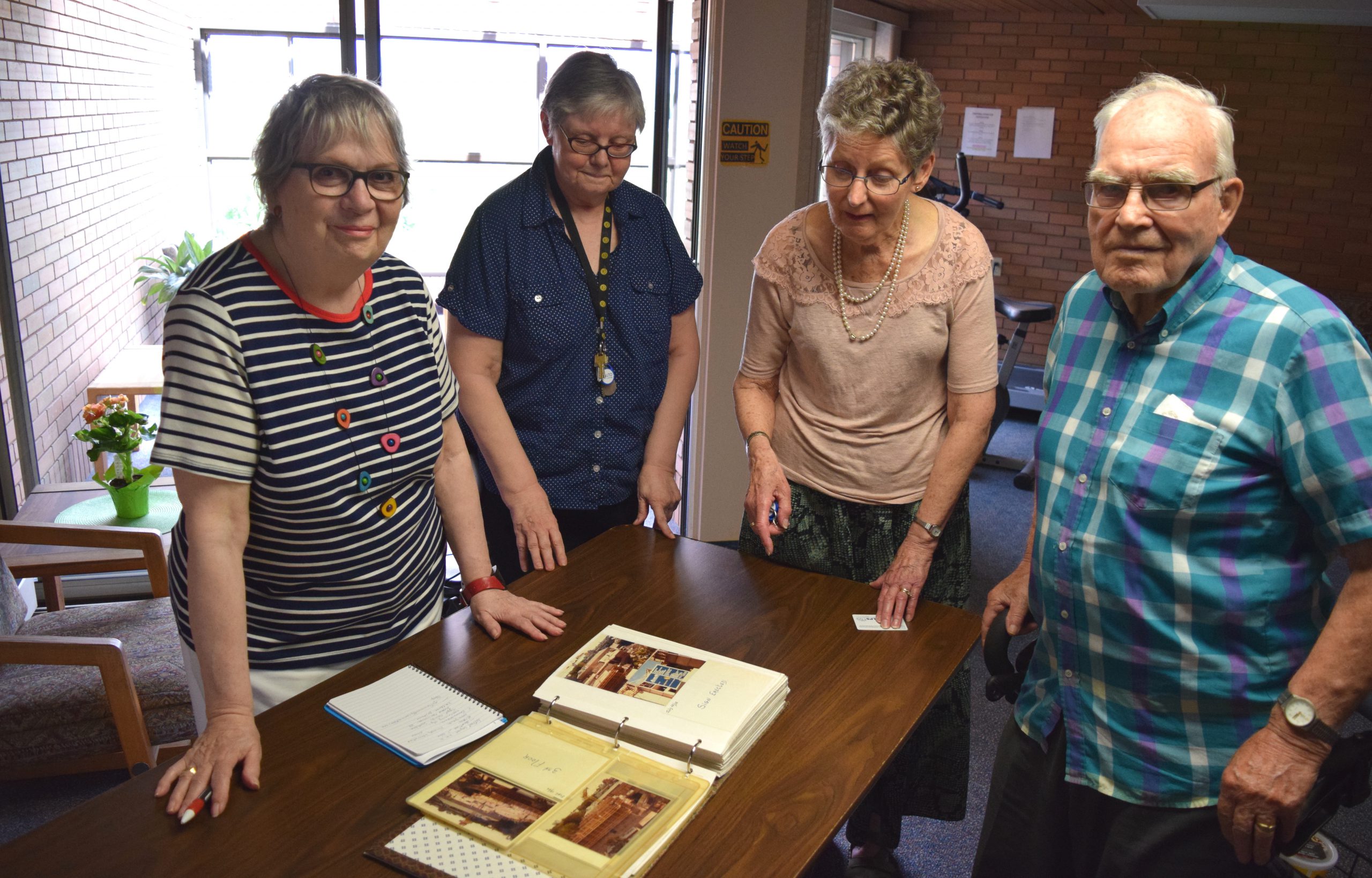
Gail Brown is part of a group of tenants at Knox-Met Manor who want to see the donated piece of stained glass find a permanent place displayed in the building. Though only living in Knox-Met Manor for the past two years and having no direct connection to the church, Brown still feels a responsibility to preserve this piece of the community’s history.
“I’m in very strong support of public art that shows the history of our city,” says Brown. “The church is empty now but it helped build this place that so many people call home. We have a piece of the architecture and it’s something amazing that needs to be respected, preserved and its history maintained.”
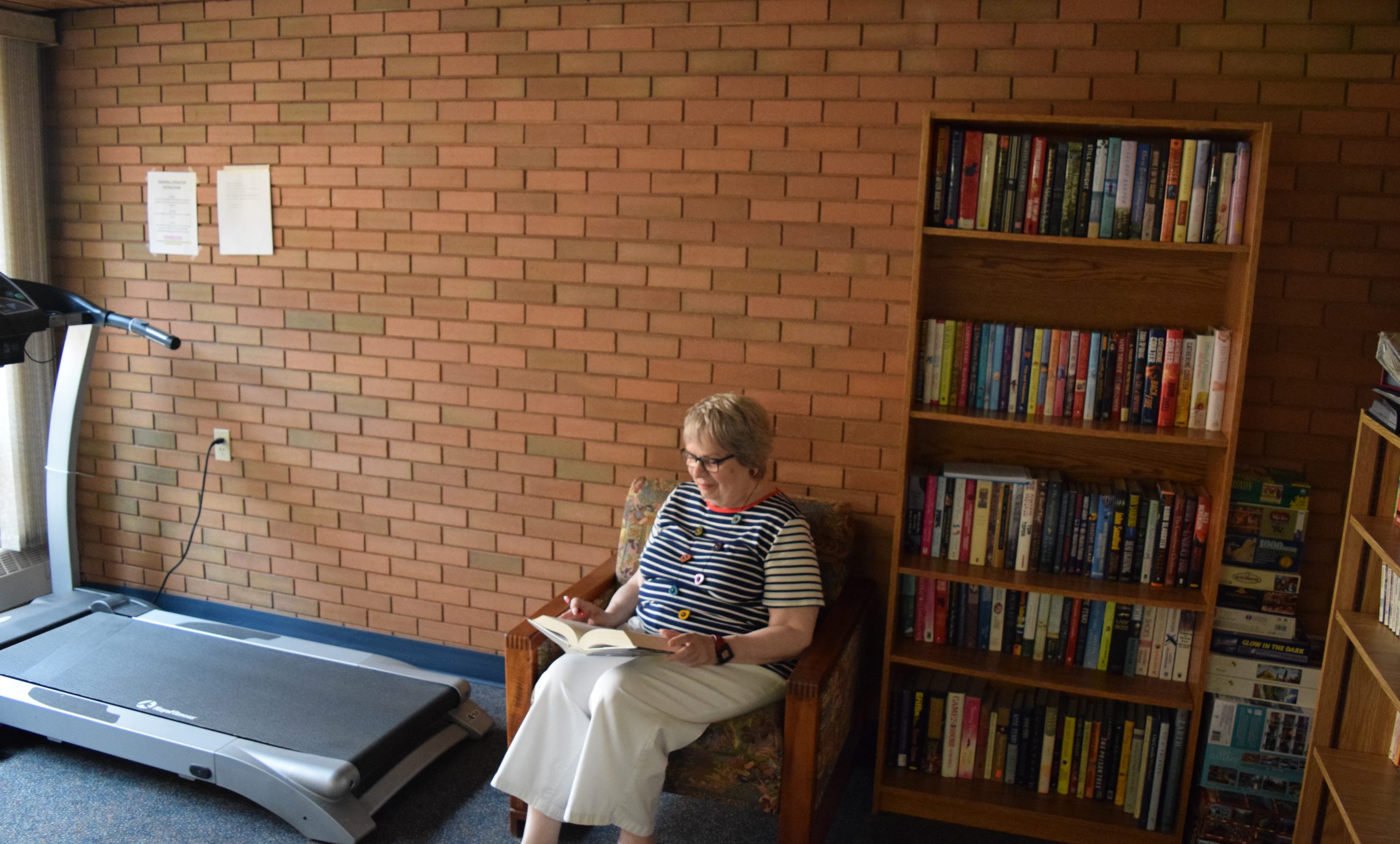
Lorna Etwell points out that the seventh floor of Knox-Met Manor is a perfect spot to mount the stained glass. It’s a shared space where tenants go to do their laundry, read a book, hop on an exercise bike, do a puzzle, or meet in the sunroom that overlooks the Garneau neighbourhood and right to the spot where the empty Knox Metropolitan United Church stands for the time being. She recalled that after some discussion it was determined that the brick wall next to the bookcase was the best location to proudly display the piece of community history.
“It’s an honour to have received this gift from the church,” says Etwell. “We want to do right by making sure it has a place where it can be appreciated.”
